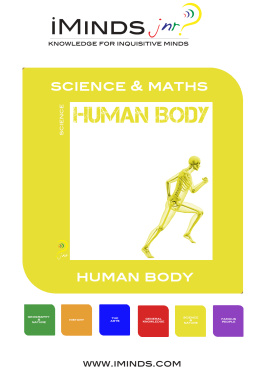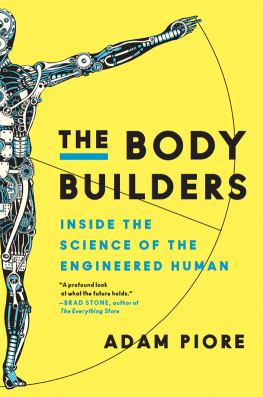SURVIVING THE
EXTREMES
ALSO BY KENNETH KAMLER, M.D.
Doctor on Everest: Emergency Medicine at the Top of the World
SURVIVING THE
EXTREMES
A DOCTORS JOURNEY TO THE
LIMITS OF HUMAN ENDURANCE

KENNETH KAMLER, M. D.
ST.MARTINS PRESS  NEW YORK
NEW YORK
SURVIVING THE EXTREMES . Copyright 2004 by Kenneth Kamler, M.D. All rights reserved. Printed in the United States of America. No part of this book may be used or reproduced in any manner whatsoever without written permission except in the case of brief quotations embodied in critical articles or reviews. For information, address St. Martin's Press, 175 Fifth Avenue, New York, N.Y. 10010.
www.stmartins.com
Book design by Gretchen Achilles
ISBN 0-312-28077-7
10 9 8 7 6 5 4 3 2
For my parents, Ethel and Willie
(Burro and Potoff).
They never entered an extreme environment,
but by their examples
I learned what willpower
and positive thinking can achieve,
and what devotion and
courage are all about.
CONTENTS
SURVIVING THE
EXTREMES
PROLOGUE
IN EXTREMIS

IF THE CHANTING STOPPED , my patient would die. I was sure of it, as sure as anyone can be in a freezing tent on the highest mountain in the world, breathing only half the air there is at sea level. Pasang should have died hours ago. He was lying in a sleeping bag on a makeshift stone tablea pile of rocks arranged as evenly as possible to form an elevated platform. The cracks between the rocks were mortared with frozen urine, Pasang having become incontinent before I could get a catheter into his bladder. The propane lantern illuminating the tent cast a sickly yellow glow across his bloated face, pocked with blue ecchymotic patches where blood had accumulated and then dried under his skin. His eyes were swollen shut. I had seen healthier-looking patients die faster in intensive care units.
Gathered around the rock platform were Sherpas, mountain men like Pasang, who had come to pray. Though they were facing toward him, eyes wide open, they didnt seem to see him. Their lips were moving in response to a monotonous chant arising from deep within them, as if conforming to the sound being produced rather than creating it. More chanting came from outsidea disembodied chorus from tents around the camp where other Sherpas were keeping vigil. In the stillness of the night the effect was powerful, primal, and unnerving: a quadraphonic rumble emanating from within the mountain itself.
While crossing an aluminum ladder placed horizontally to bridge a crevasse in the ice, Pasang had slipped and fallen 80 feet, wedging himself headfirst between the narrowing walls of ice at the bottom. Working quickly, a combined team of Spanish and Nepalese climbers managed to get a rope around his waist and hoist him back up to the surface. But by then he had been refrigerated upside down for nearly half an hour. The climbers radioed me at base camp to explain what had happened and ask for advice, but diagnosis and treatment over a two-way radio isnt easy. Preliminary reports were being transmitted to me in clipped phrases by excited climbers with strong accents and weak radios. I didnt have much to go on and wasnt too sure what to prepare for.
Radio in hand, I stepped outside my tent into the subzero temperature. Looking halfway up the massive 2,000-foot frozen cascade of ice and snow that marks the majestic and awesome entrance to Mount Everest, I saw a cluster of black dots moving against the frozen white surface. Despite the static, I could make out that Pasang was bleeding from his nose, but conscious and even able to walk. They were bringing him to me at base camp. The dots started to move, slowly conforming to the outline of each gigantic ice feature they crossed as they worked their way down the slope. Then they stopped. The radio crackled on again. Pasang had started to stumble badly. He collapsed, and was now unconscious. They were trying to secure him to a ladder, similar to the one from which he had fallen, to use as a litter. Now they would have to lower him slowly and laboriously, relying on a combination of clever rope work and brute strength. In the hours it would take for my patient to arrive, I had only a few facts with which to make a diagnosis, but plenty of time to think about his treatment.
A head-on collision of this magnitude, followed by loss of consciousness, would likely be fatal even if it occurred inside the kind of well-equipped emergency room in which I often worked in New York City. But I was at base camp on Mount Everest, 17,559 feet above sea level, separated from the nearest hospital by some of the most remote and rugged terrain to be found anywhere in the world. Evacuation by air would be entirely dependent on the weather (usually lousy), the condition of the helicopter (often grounded for lack of parts), and the availability of the pilot (frequently away). If Pasang made it down to base camp alive, I would do everything I could to keep him that way until we could get him out. I wasnt sure, though, whether my efforts would make any difference at all. High-impact head injuries were the accidents I feared most; they were the ones for which I could do the least.
The brain is delicate and unforgiving. To protect this most vital organ, the body shields it inside a rigid case. The skull is very effective in protecting the brain against incidental trauma, and may even stand up to the swipe of a bear paw, but it is not strong enough to withstand an 80-foot headfirst dive into a crevasse. Pasang had most likely fractured his skull; the nosebleed was probably blood flowing downstream from the broken bone. In these cases, however, it is not the fractured skull itself that causes the most injury; as long as fragments arent propelled inward, the breaking bone absorbs the shock and the brain survives. Many fatal head traumas dont even break the skull. Pasang might have a fracture, but he was showing signs of an injury even more insidious and deadly.
Skulls have disadvantages. While a blow to the head may not break the bone, it can tear the blood vessels that wrap around the brain. The blood, leaking out but encased in an unyielding skull, has no place to go but inward, collecting into what is called a hematoma. Held in by the tough lining of the skullthe durathe blood compresses the much softer brain tissue, forming a subdural hematoma. The classic symptom is a temporary recovery right after the initial shock, as Pasang had shown when he had, at first, been able to walk on his own. Meanwhile, the bleeding continues to fill the confined space until the pressure causes a loss of coordination and unconsciousness, like Pasang had next experienced. Further brain compression, though often due to a relatively small amount of blood loss, eventually shuts down vital functions and the patient dies. Like Pasang?
Pasang did make it down alive, though just barely, and now I was watching him die. The relentless pressure was starting to affect the electrical circuits deep down, the ones that send the pacing signals for breathing and heartbeat. Respiration and pulse were slowing. Less oxygen was getting to his brain, causing the suffering tissues to swell and take up more space, further accelerating the pressure. Pasangs body was about to shut down, inexorably following the rules of physiology gone bad.
Next page












![Frances M. Ashcroft - Life at the Extremes: [The Science of Survival]](/uploads/posts/book/49583/thumbs/frances-m-ashcroft-life-at-the-extremes-the.jpg)

 NEW YORK
NEW YORK